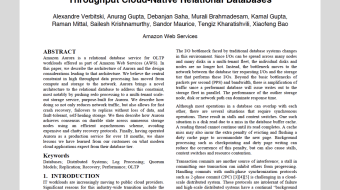Customer-obsessed science


Research areas
-
September 26, 2025To transform scientific domains, foundation models will require physical-constraint satisfaction, uncertainty quantification, and specialized forecasting techniques that overcome data scarcity while maintaining scientific rigor.
-
Featured news
-
MICRO 20242024In this paper, we introduce Surf-Deformer, a code deformation framework that seamlessly integrates adaptive defect mitigation functionality into the current surface code workflow. It crafts several basic deformation instructions based on fundamental gauge transformations, which can be combined to explore a larger design space than previous methods. This enables more optimized deformation processes tailored
-
2024Abstraction ability is crucial in human intelligence, which can also benefit various tasks in NLP study. Existing work shows that LLMs are deficient in abstract ability, and how to improve it remains unexplored. In this work, we design the framework AbsInstruct to enhance LLMs’ abstraction ability through instruction tuning. The framework builds instructions with in-depth explanations to assist LLMs in
-
TQC 20242024Given a linear system of equations Ax = b, quantum linear system solvers (QLSSs) approximately prepare a quantum state |x⟩ for which the amplitudes are proportional to the solution vector x. Asymptotically optimal QLSSs have query complexity O(κ log(1/ε)), where κ is the condition number of A, and ε is the approximation error. However, runtime guarantees for existing optimal and near-optimal QLSSs do not
-
ICPR 20242024This paper improves upon existing data pruning methods for image classification by introducing a novel pruning metric and pruning procedure based on importance sampling. The proposed pruning metric explicitly accounts for data separability, data integrity, and model uncertainty, while the sampling procedure is adaptive to the pruning ratio and considers both intra-class and inter-class separation to further
-
JSM 20242024SHAP (SHapley Additive exPlanations) is widely used in machine learning model explanations nowadays, especially for complex and black-box models (deep learning models, ensemble models). SHAP assigns a feature contribution to every record. Users can check each individual record feature contribution or use the mean absolute SHAP values over the entire dataset as the SHAP feature importance. But it’s not uncommon
Collaborations
View allWhether you're a faculty member or student, there are number of ways you can engage with Amazon.
View all














































